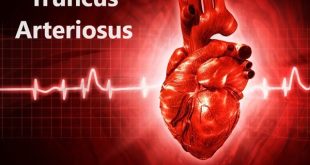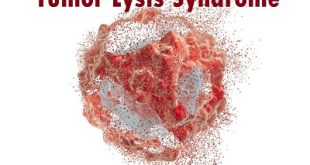Description
Toxic shock syndrome (TSS) is a more severe complication syndrome due to staph infections. It is a systemic illness which means it affects the whole body caused by the two types of bacteria called Staphylococcus aureus and Streptococcus pyogenes. Usually, these bacterial species produce toxins which may not be confronted with some bodies. The reactions associated with these toxins produce symptoms in the host body. The two bacterias live without any harmless in the nose, skin, and mouth, but in the case of deeper penetration, they tend to deteriorate the skin tissues and affect the organs from working properly.
Pathophysiology of TSS
- The Streptococcus aureus invades the body through open wounds, the vagina, localized infections or burns, and the throat. They produce a range of protein exotoxins that are key factors for the TSS pathogenesis. Once they enter the systemic circulation and spreads to all the organs.
- The endotoxins produced by the staphylococcus are Toxic shock syndrome toxin type-1and Staphylococcal enterotoxin A, B, C, D, E, & H. All these toxins act as superantigens in order to trigger excessive and nonconventional T-cell activation with inflammatory cytokines including interleukin 1 (IL-1) and tumor necrosis factor (TNF).

- The exotoxins stimulate a response from the T-cells in the body and affect their ability to bind to receptors and class II major histocompatibility complex of antigen presenting cells. As a result, the T-cells proliferate extensively in the body, leading to symptoms of shock and tissue destruction.
- The endotoxins produced by the staphs will also interfere with the mechanism of the blood pressure regulation and eventually lead to hypotension, or low blood pressure.
Causes
- It’s caused by two types of bacteria, Staphylococcus aureus (often called staph) and Streptococcus pyogenes (often called strep), in most cases related to staph bacteria.
- There are several possible exotoxins that may be responsible for causing toxic shock syndrome, including Toxic shock syndrome toxin type-1and Staphylococcal enterotoxin A, B, C, D, E, & H.
- The majority of the TSS is associated with the exotoxin of Toxic shock syndrome toxin type-1. The second most common endotoxin involved in TSS is Staphylococcal enterotoxin B.
- The infection is significantly due to the use of tampons especially ‘super absorbent’ tampons.
- TSS may also occur due to the injuries in soft tissues like cartilages, tendons, ligaments and soft bone.
- Trauma & Surgery: TSS may also develop after minor trauma. During surgery, the Staphylococcus species from the environment or on the skin may invade through open cuts and reside in the tissues.
- Tampon fibers scratch the vagina, making it possible for bacteria to get through and into the bloodstream.
Risk factors
- Using tampons and menstrual cups: using the tampons and menstrual cups for more than the specified time (Normally 8 hours).


Menstrual cup and tampon
- Using female barrier contraceptives such as an unsterile diaphragm and contraceptive cap.
- A break in your skin: A scratch or a wound in which a staph can easily invade and penetrate deep into the inner organs.

- Giving birth.
- Being a woman.
- Chickenpox infection
- Heavy nosebleeds: prolonged use of nasal packing for nosebleeds. Sometimes this may be at high risk for the severe infection with Staph.
- Impetigo, cellulitis or throat infections are majorly due to the staph infection.
Epidemiology
The most predominant occurrence of group A streptococcal (GAS) toxic shock syndrome was reported with increasing frequency from Europe and North America. It was estimated about 3.5 cases of invasive GAS per 100,000 persons, with a case-fatality rate of 30 to 60%.
Symptoms

The most common symptoms of toxic shock syndrome are as follows:
- Fever higher than 38.9 ºC
- Rapid drop in blood pressure
- Skin rashes or peeling of skin
- Flu symptoms like a sore throat, headache, chills, muscle ache, and cough
- Sensitivity to light
- Collapse
- Kidney failure
- Drowsiness
- Respiratory problems
- Feel being sick
- Diarrhoea

Pealing of skin
Complications
Some of the possible complications such as
- Death
- Shock
- Organ failure include liver, heart, and kidney
- Hepatic necrosis
- Marrow suppression and thrombocytopenia
- Metabolic acidosis, electrolyte disturbance.
- Recurrence
- Encephalopathy and cerebral edema.
Diagnosis and test
Your doctor may ask questions about symptoms for past days and may do a physical examination. If the doctor suspects toxic shock syndrome based on the physical exam, a few other procedures are performed. If the doctor suspects toxic shock syndrome, the following tests are usually performed:
- Blood is drawn to check blood counts, electrolytes, and liver and kidney functions. An elevated white blood cell count, elevated liver enzymes, abnormal electrolytes, and abnormal kidney function may be consistent with toxic shock syndrome.
- Women undergo a pelvic exam.
- A chest X-ray film may reveal abnormalities, such as fluid in the lungs.
- An electrocardiogram(ECG), which traces the electrical activity of the heart, may be performed.
- Tests are likely performed to exclude other disease possibilities, such as Rocky Mountain spotted fever and measles.
Treatment and medications
The treatment for TSS varies from patient to patient; however, the following treatments are fairly common. Patients with TSS usually will be treated with two or more of the following treatments:
- Intravenous fluids to treat shock
- IV antibiotics
- Deep surgical cleaning of an infected wounds
- Cardiac medications to help treat low blood pressure
- Oxygen and/or mechanical ventilation as needed
- Blood products if needed
- Dialysis for patients with kidney failure
- Hospitalization in an intensive-care unit
Antibiotic therapy
Antimicrobial therapy must cover all likely pathogens in the context of the clinical setting. Some of the antibiotics such as follows:
- Clindamycin (Cleocin)
- Aqueous penicillin G (Pfizerpen)
- Nafcillin (Nalipen in dextrose)
- Vancomycin
Prevention
Certain precautions can reduce the risk of toxic shock syndrome such as:
- Washing your hands frequently to remove bacteria
- Maintain mensural hygiene by wearing sanitary napkins
- keeping cuts and surgical incisions clean and changing dressings often
- Using a reusable silicone menstrual cup and cleaning your hands thoroughly when changing it
- changing your tampon every four to eight hours
- wearing a low-absorbency tampon or sanitary napkin during menstruation
- All wounds should be kept clean and monitored for signs of infection.
Do not wear tampons if you have a personal history of toxic shock syndrome. This disease can recur.
 Diseases Treatments Dictionary This is complete solution to read all diseases treatments Which covers Prevention, Causes, Symptoms, Medical Terms, Drugs, Prescription, Natural Remedies with cures and Treatments. Most of the common diseases were listed in names, split with categories.
Diseases Treatments Dictionary This is complete solution to read all diseases treatments Which covers Prevention, Causes, Symptoms, Medical Terms, Drugs, Prescription, Natural Remedies with cures and Treatments. Most of the common diseases were listed in names, split with categories.









I am a patient, pls, where can I get d recommended drugs to buy. treat as urgent pls
Amazing mind opening disease facts that help broaden my horizons and helps me in here in Medical School
My son age 6 to 7 years also in this type of deseas what I do
please consult a doctor.
Really my brother also suffering from this disease so aid us to treat it
Please consult a doctor.
Psychology is a great idea for the future in terms with all that you have done in the past and you have psychology is a ability to make decisions about your life
please I’m one how can I get helped
Please consult a doctor as soon as possible.
Please what medicine can give to the person who have this problem
Treatment includes antibiotics and possibly surgery.
The usually prescribed antibiotics are nafcillin, oxacillin, and first-generation cephalosporin. Nafcillin or oxacillin (2 g q4h) is generally recommended.